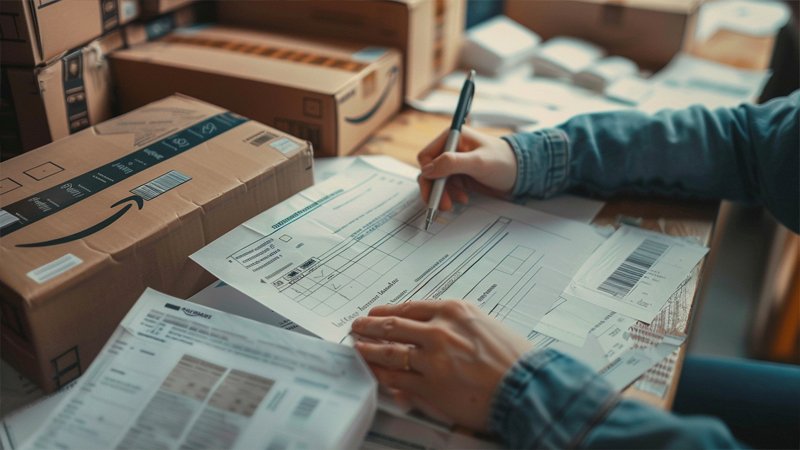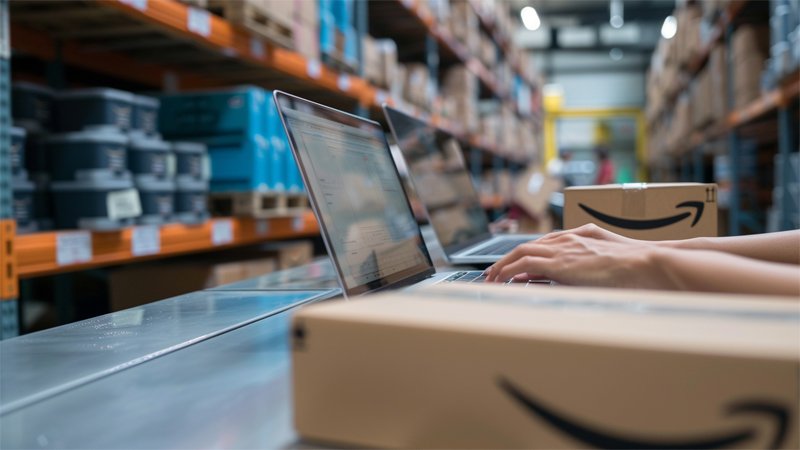
My first Amazon listing felt like a huge leap into the unknown, but importing from China made it possible.
Importing products from China to sell on Amazon requires solid planning, compliance checks, and optimized listings. By focusing on quality, Amazon standards, and smart logistics, you can thrive in this competitive space.
I learned a lot along the way.
What Is the Process for Importing Products from China to Sell on Amazon?
A clear roadmap saved me from all kinds of mix-ups.
Plan your product choice, confirm suppliers, handle customs paperwork, and sync with Amazon’s fulfillment channels. These steps form a smooth bridge between China and your Amazon store.

Importing products from China may feel like assembling a puzzle. Start by pinpointing what you want to sell—maybe a trending kitchen gadget or a unique fitness accessory. I like to check Amazon best-seller lists or read customer reviews to see where there’s room for improvement. Once you’ve settled on a product, it’s time to find a reputable supplier1.
Freight forwarders and customs brokers become your best friends in this phase. They help figure out shipping routes, duties, and documents. If you’re enrolling in Fulfillment by Amazon (FBA)2, make sure your supplier understands Amazon’s packaging and labeling guidelines. Nothing is worse than your shipment arriving at the warehouse with missing barcodes or mismatched SKUs.
I’ve found that communication is key, especially if you’re coordinating with a supplier halfway across the world. Tools like WeChat or Skype can speed up clarifications and reduce misunderstandings. Once production finishes, confirm final product samples to ensure everything meets your specs. Then, watch your shipment’s progress closely as it travels. A delay at customs can set you back, so staying informed helps you sort out potential issues faster.
At last, when your goods arrive at Amazon’s warehouse, you can breathe a bit easier—but the journey’s not over. Maintaining an active presence—tracking inventory levels, monitoring customer feedback—will help your new product line thrive in Amazon’s fast-paced ecosystem.
How Can You Ensure That Your Products Meet Amazon's Required Standards?
Missing Amazon’s standards can cost you sales, or worse, get your listing suspended.
Learn Amazon’s product guidelines, test for quality, and provide accurate listings. Proper compliance prevents negative reviews and potential listing shutdowns.

Every time I launch a new product, I revisit Amazon’s guidelines. Each category—electronics, toys, apparel—has its own rules. For instance, electronics might need certifications such as UL or FCC approvals. Toys could require safety testing for things like choking hazards. Even subtle packaging details, like how you handle bubble wrap or cardboard inserts, matter if you want to avoid trouble.
Product quality is the next big piece. I’ve found it cheaper to do thorough quality checks3 upfront than deal with returns and negative feedback later. Some sellers hire third-party inspection services who visit the factory and randomly test items. Others rely on supplier-provided certificates. Personally, I do both—I trust, but I verify.
Accurate product listings can also ward off complaints. If the listing claims the product is stainless steel but the item has plastic parts, customers may feel misled. That frustration often leads to bad reviews, and too many negative marks can kill a product’s momentum. So always double-check dimensions, materials, and functionality before writing your copy.
Many new sellers overlook Amazon’s packaging and FBA labeling requirements4. I made that mistake once—the warehouse refused half my shipment because each unit lacked a scannable barcode. Fixing that taught me that small details add up. If everything meets Amazon’s criteria, your product is more likely to have a smooth start.
What Strategies Can You Use to Optimize Your Amazon Sales Pages to Boost Sales?
A fine-tuned listing can work like a magnet for eager shoppers.
Improve titles, bullet points, and product images. Keep keywords relevant and highlight unique benefits to draw in potential buyers.

My first listings were dull—just a basic title and a low-quality photo. Sales trickled in, but customers kept asking the same questions, which signaled that my product description missed the mark. So, I took a deep dive into Amazon’s SEO. I inserted keywords shoppers actually use—like “eco-friendly water bottle5” or “compact travel charger”—right into the title and bullet points.
Bullet points should be short yet descriptive. Instead of bland statements, I highlight benefits: “Leak-proof design for on-the-go convenience” beats “Plastic water bottle with lid.” Images also play a massive role. I switched from a single, poorly-lit picture to several crisp shots showing the product from different angles, including one that displayed it in everyday use.
Reviews and social proof6 can also boost conversions. Early on, I offered discounts to friends who gave honest feedback. While you can’t incentivize positive reviews directly (that’s against Amazon policy), you can encourage genuine feedback by following up after purchase. Sincere customer photos and detailed reviews make potential buyers feel more confident.
Lastly, consider Enhanced Brand Content7 (EBC) or A+ Content if your brand is registered. It allows for more visually appealing layouts, charts, and stories. When people see a product’s story unfold in images and text, they connect with it emotionally. That’s often the difference between a casual browser and a paying customer.
How Can You Manage Inventory and Logistics to Support Your Amazon Business Effectively?
A popular listing can spark a sales surge—if you’re ready to keep up.
Track sales velocity, forecast demand, and maintain consistent supplier communication. Good inventory control prevents stockouts or costly overstock situations.

When one of my products finally caught on, sales spiked fast. It felt exciting—until I realized I was about to run out of stock. Scrambling to reorder at the last minute resulted in expensive air freight costs and a gap in availability. That short supply window hurt my product ranking, forcing me to work extra hard to recover.
Keeping an eye on sales velocity8 is key. Tools like Amazon’s own Seller Central analytics or third-party apps can estimate how many units you’re likely to sell weekly or monthly. If you see a sudden uptick in orders, it might be time to plan a reorder sooner. You don’t want success to catch you unprepared.
Forecasting matters, too. If you sell seasonal products—like swim gear or holiday decorations—use historical data to stock up before peak demand. I usually keep a buffer inventory for non-seasonal items in case I encounter production delays. Meanwhile, building a strong relationship with your supplier can cut down lead times. If they know you place regular orders, they might push your batch forward or expedite shipping.
Shipping strategies also matter. For small, lightweight goods, air freight might be viable, though it’s pricier. Heavier items can benefit from sea freight, saving costs but requiring more planning time. A balanced approach—splitting shipments between sea and air—lets you keep some stock in transit and some on hand.
Ultimately, the goal is steady availability. Amazon’s algorithm rewards items that consistently stay in stock and handle customer demand. A well-managed supply chain keeps your listing visible and profitable.
Conclusion
With a solid import plan, Amazon compliance, and strong listing optimization, you can transform your Chinese imports into best-selling Amazon items.
-
Finding a trustworthy supplier is key to successful importing. This link offers tips and resources to help you choose wisely. ↩
-
Understanding FBA is crucial for optimizing your product sales on Amazon. Explore this link to learn how to leverage FBA effectively. ↩
-
Implementing effective quality checks can save you from costly returns and negative reviews. Discover best practices to enhance your product quality. ↩
-
Knowing the packaging and FBA labeling requirements can prevent shipment issues and ensure a smooth selling experience on Amazon. Learn more here. ↩
-
Explore the advantages of eco-friendly water bottles to understand why they are a great choice for sustainable living. ↩
-
Discover how social proof influences buyer decisions and can significantly increase your product's credibility and sales. ↩
-
Learn how Enhanced Brand Content can enhance your product listings and boost sales through better visuals and storytelling. ↩
-
Understanding sales velocity is crucial for effective inventory management, ensuring you meet demand without overstocking. ↩




